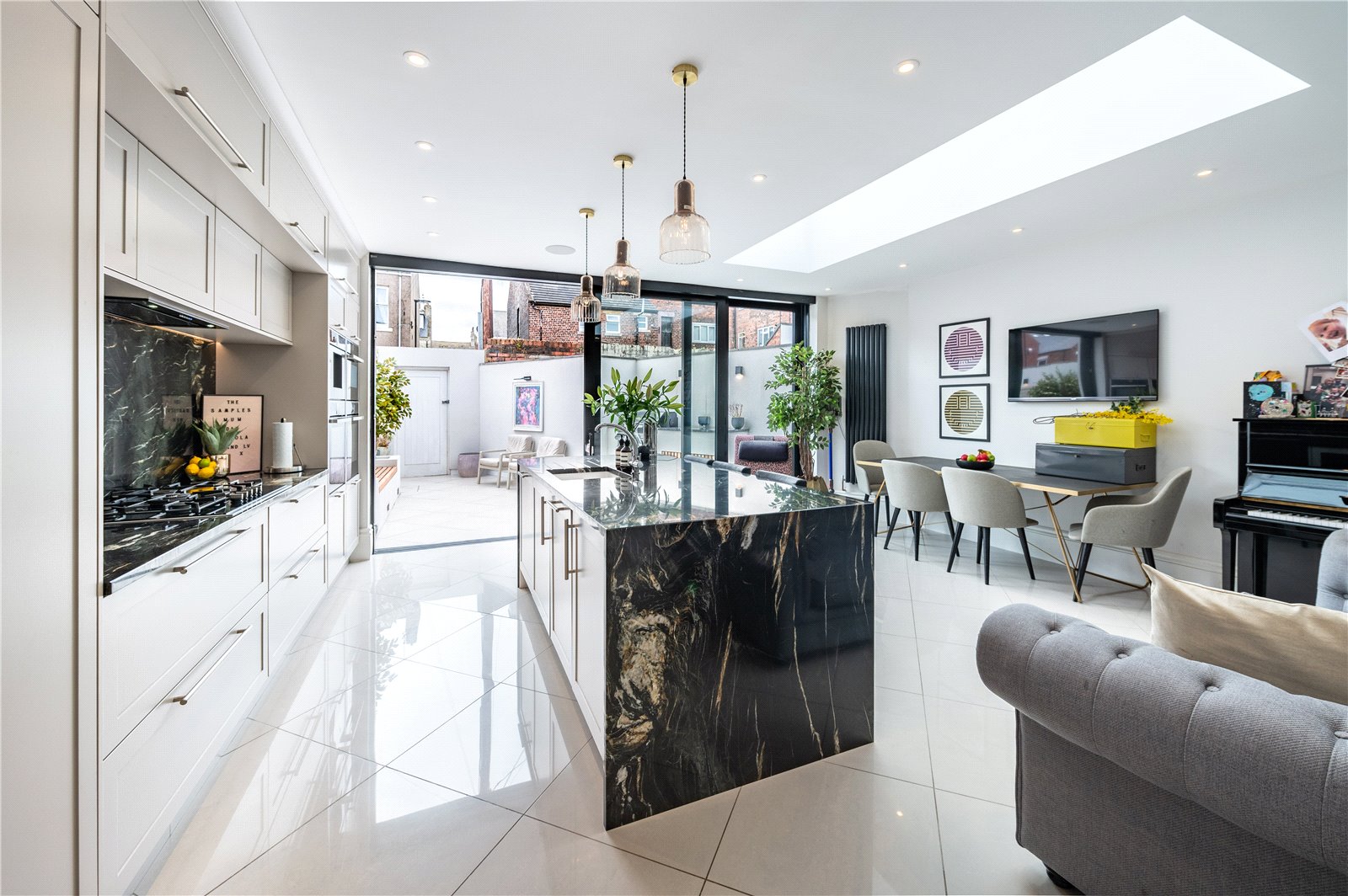Open plan living: your ultimate design guide
Architectural Design Insights | Alistair Crerar

How to create a beautiful and functional open plan home
Creating an open plan living space is a great way to maximize the use of available space, while giving the home a cohesive style. When designing your open space, it’s important to consider elements like scale, flow, and texture to ensure that the end result is both aesthetically pleasing and comfortable.
Identify the Type of Space
Before designing your open plan space, it is important to identify which type of space you need. Ask yourself questions like what type of activities or gatherings will be taking place in the room. Will it be an area used for entertaining? If so, will there be a designated dining area? Once you have identified the types of activities that will take place in the space, you can begin to consider how to create an environment conducive to them.
Form Follows Function
Function should be the driving design force behind any plan for an open space. The goal should be to create a functional layout that maximizes all available space for each activity. This can include anything from properly designed counter top space or seating arrangements to implementing natural light sources or movement patterns when needed. It is important to consider how the activities within each space will interact with one another so that each element has its own purpose, but still interacts with the rest of the environment in harmony.
Set a Design Theme
When designing an open plan space, it is essential to establish a design theme that can carry throughout the whole area. This allows all elements of the plan to fit together seamlessly and also helps create a focal point in each area. Factors such as colour, texture, pattern and light will all help determine your overall theme. Utilize textures or finishes that both border and contrast with one another depending on what activity is occurring within each space for a stylish finish.
Think About How You Will Use the Space
As with all rooms, it is important to consider use when designing an open plan space. Think about which activities and events you generally take part in and which areas need to be blocked off for these activities. This will help inform your overall design as it will help define the area for each event or activity. For example, you may wish to include comfortable seating areas for relaxing and family time, as well as plenty of storage solutions to create a clutter-free environment. One of our clients recently shared with us how glad she was that she encorporated a second dishwasher. Christmas is now that bit tidier and less stressful because of this detail! We always like to remind clients about the bins – a hidden bin and recycling area can transform the feel of a space.
Incorporate Flexible Solutions
When designing an open plan space, flexibility should be a priority. Incorporate furniture that can serve different purposes easily. This could mean buying modular or multi-functional furniture such as day beds, which can double as sofas for extra seating when needed. Similarly, use rugs to create distinct zones within the same open floor plan and move them around according to your needs. With a flexible layout and design, you can turn your open plan space into different atmospheres for working, relaxing or entertaining guests at a moment’s notice.
Think About How You Will Use the Space
As with all rooms, it is important to consider use when designing an open plan space. Think about which activities and events you generally take part in and which areas need to be blocked off for these activities. This will help inform your overall design as it will help define the area for each event or activity. For example, you may wish to include comfortable seating areas for relaxing and family time, as well as plenty of storage solutions to create a clutter-free environment. One of our clients recently shared with us how glad she was that she encorporated a second dishwasher. Christmas is now that bit tidier and less stressful because of this detail! We always like to remind clients about the bins – a hidden bin and recycling area can transform the feel of a space.
Meet Laura, who keeps your extension project on track
At Acre Design, we know that successful projects are built not just on great design, but on clear communication and …Planning permission approved in Birtley, Gateshead.
We are delighted to confirm that planning permission has been approved for a substantial rear and side extension to a …Will your house extension be ready by Christmas?
At Acre Design, one of the questions we hear most often is: “If I start now, could my extension be ready …Planning applications in England: Lessons from COVID-19
One of the most common concerns we hear from clients is whether the planning process will delay their project. During …Building material costs: what price changes mean for your project
Anyone planning a home extension or refurbishment will know that the cost of building materials has a direct impact on …Welcome Robbie Evans, Senior Architectural Designer
We are delighted to welcome Robbie Evans to Acre Design as a Senior Architectural Designer. Based in Newcastle, Robbie brings strong experience …Our residential architectural portfolio
Explore how Acre Design has transformed homes across Newcastle, Northumberland, and North Tyneside. From elegant Victorian extensions to contemporary reconfigurations and countryside loft conversions.
Contact Acre Design
CAI Building, Royal Quays,
North Shields, NE29 6DE